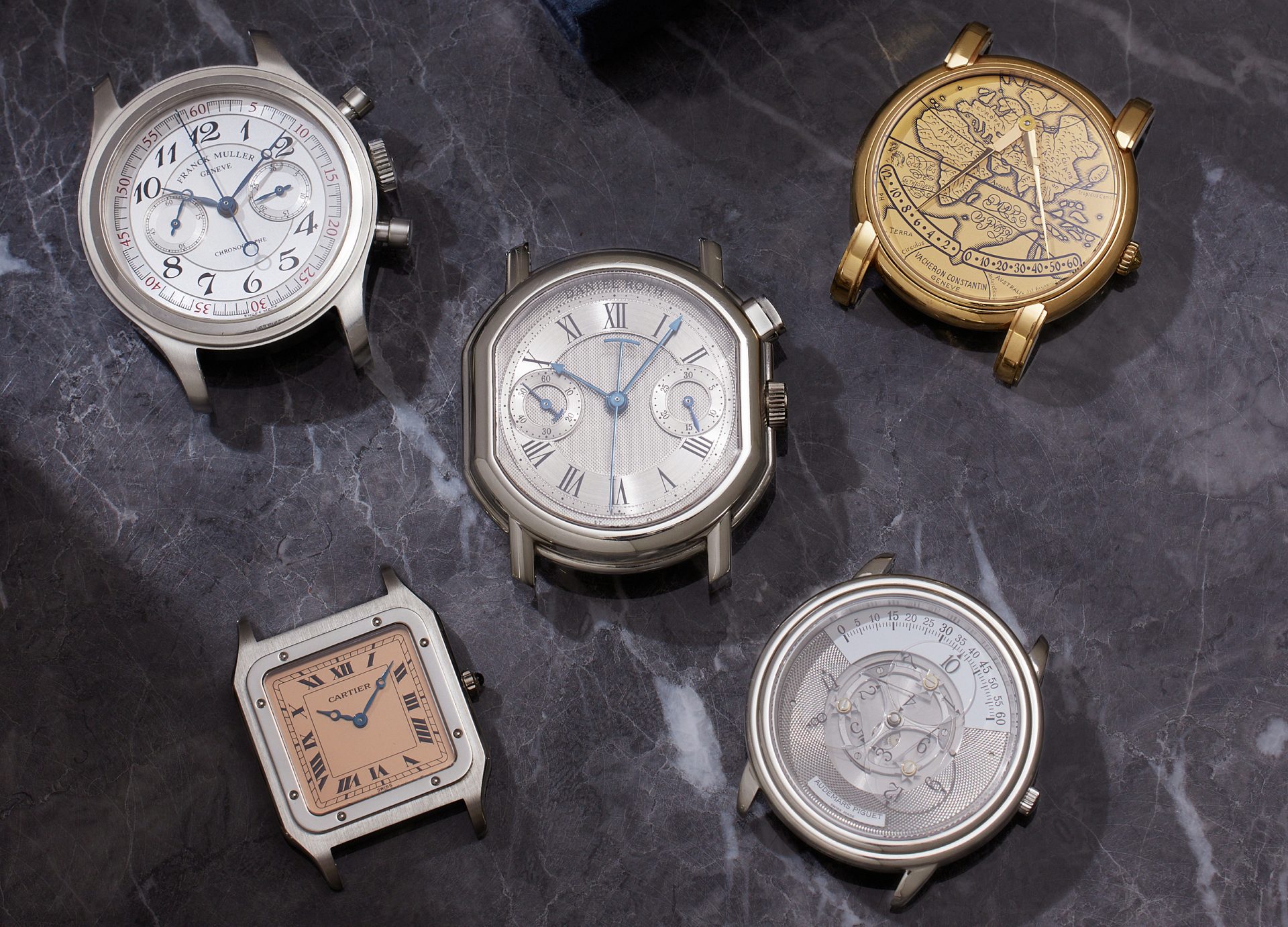Auctions run by A Collected Man are becoming a bit of a monthly treat.
Small, but perfectly formed sales feature only five watches; normally ultra-rare pieces from independents or limited editions from larger brands.
The first outing in April sold five pieces for a total of £282,000/$370,000 and the next one in May netted £203,500 /$252,000.
June’s auction opens tomorrow, with bids accepted online through to June 29. It is the last auction of the season, ahead of a summer break.
Five rare neo-vintage pieces are on the block, all without pre-sale estimates.
Cartier Santos Dumont 90th Anniversary, Limited Edition in Platinum
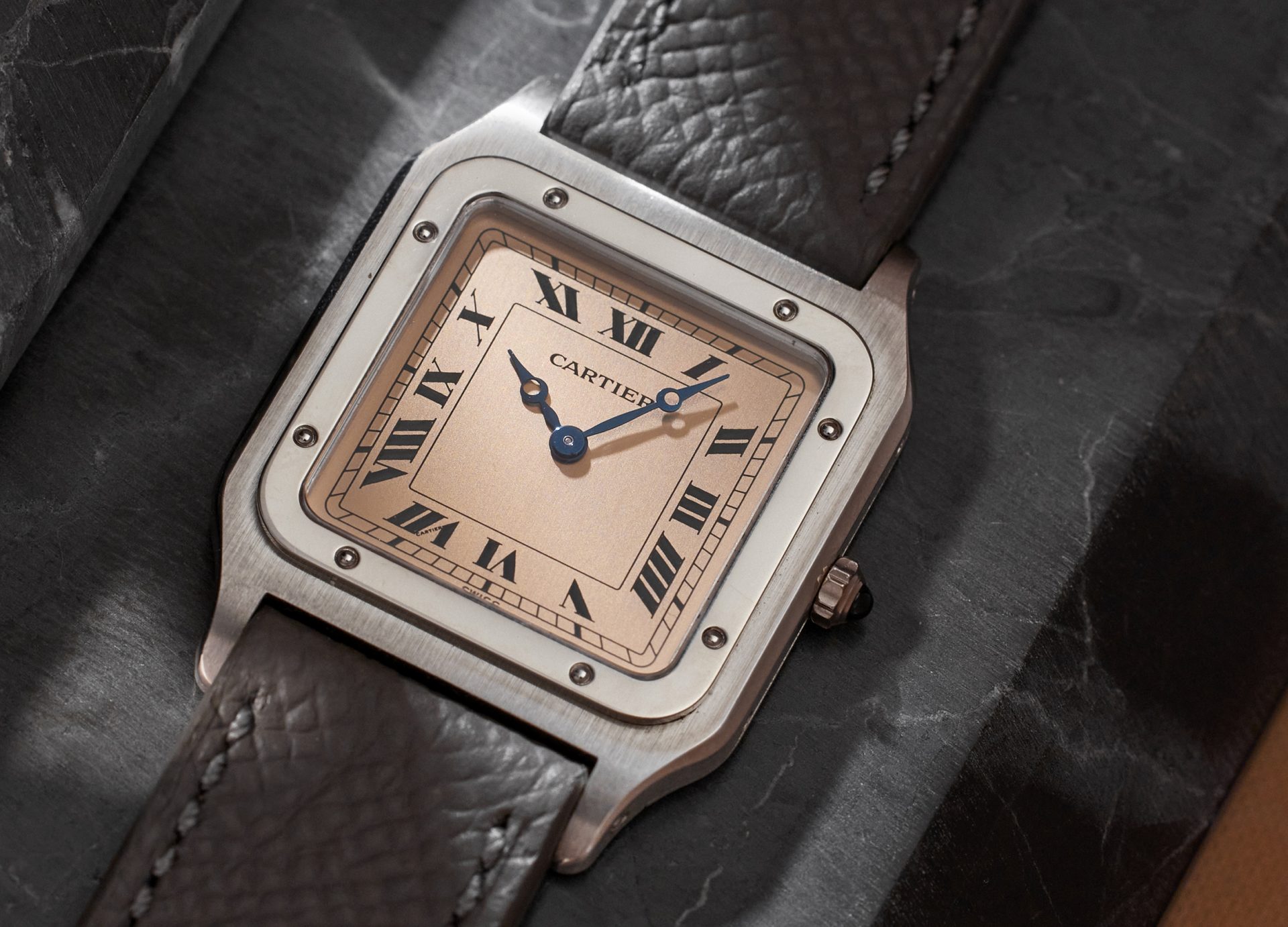
This piece is distinguished by its warm-toned salmon dial, highlighting its vintage roots. Notably, the contrast between this orange hue and the white metal case is rarely found in other Cartier pieces. While the brand may be more experimental with their case designs, they have traditionally remained fairly conventional with their dial colouring, preferring neutral tones, making this salmon all the more unusual.
Other hallmarks of Cartier’s customary design cues are also present, such as the crisp black Roman numerals with their familiar slant, a sapphire cabochon set in the crown, and blued Breguet-style hands. The platinum case holds true to the original aesthetic, with a robust look that is reinforced by exposed screws on the polished bezel, a detail that was supposedly modelled after the Eiffel Tower.
In keeping with the traditional size of the Santos-Dumont, the watch is just 27mm in diameter and 1.5mm in thickness – slightly smaller than the modern pieces of our time, but possessing equal charm. Despite this, the shape of the case and the contrast between polished and brushed surfaces adds a level of intricacy and visual appeal which give the watch a noticeable presence on the wrist.
Vacheron Constantin Mercator in Yellow Gold
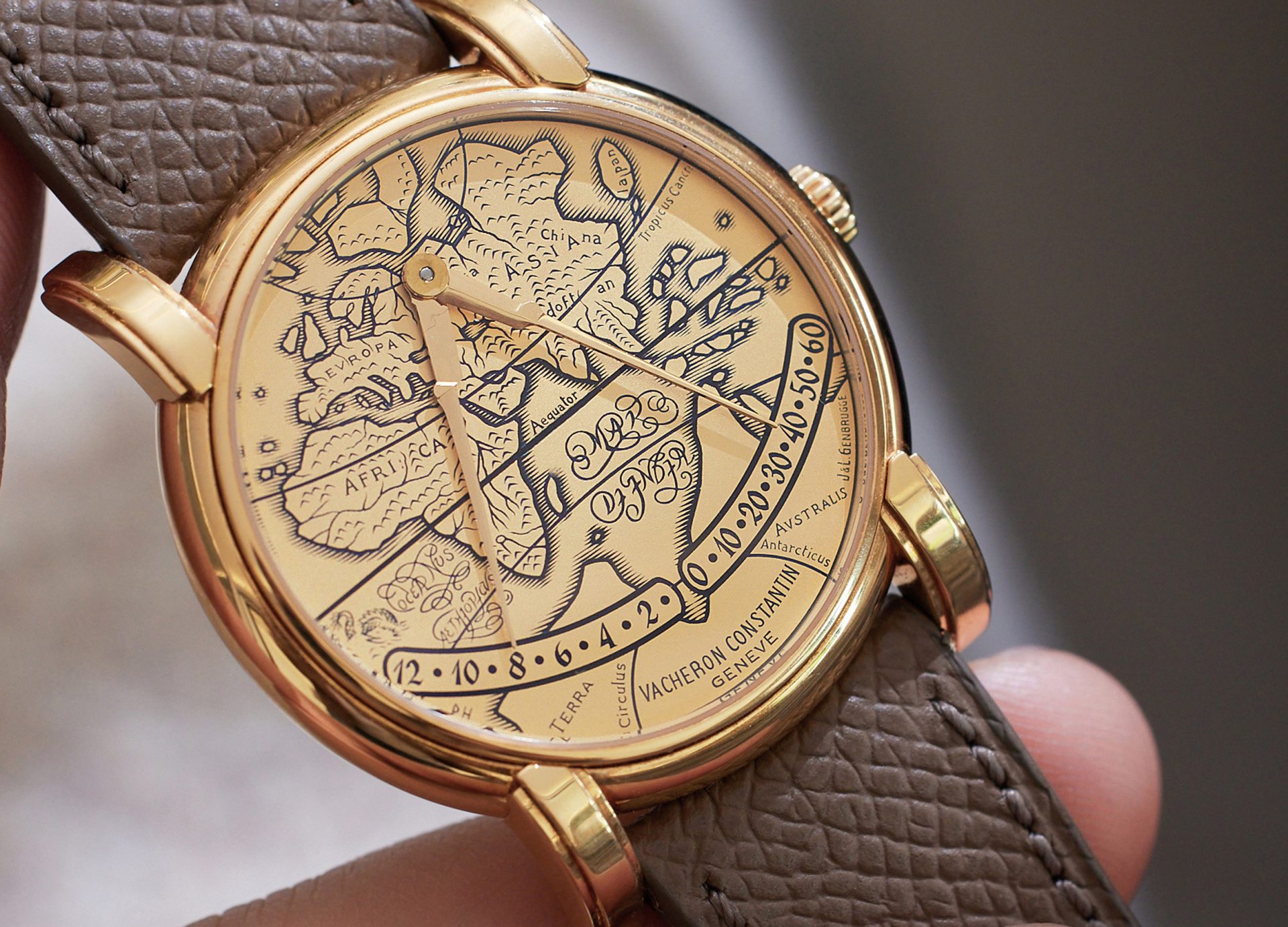
When it was first introduced, the Mercator 43050 was one of very few classically styled watches which featured an unconventional time display. It combines two retrograde hands in the shape of a compass, which display the hours on the left-hand side and the minutes on the right. The minute hand glides across the dial, then instantly changes when the hour transitions, jumping from 60 back to 0. The hour hand makes a more subtle jump as well, so this is a jump-hour watch as well as bi-retrograde – making the time far easier to read on the shorter scale.
Made from solid gold, the dial features a map of Europe, Africa, and Asia, which was first drawn by Mercator himself in the 16th century. The dial is engraved with the shape of the different continents, and then carefully filled out with black enamel by Jean and Lucie Genbrugge. The small details found in the intricate design make the Mercator a pleasure to look at closely and wear. A mystical sea creature appears at 9 o’clock, and the mountains of Europe are subtly represented as small slopes. As is to be expected, all the wording is in Latin, with phrases such as “Antarcticus” or “Tropicus Cancri” appearing throughout. At 4 o’clock, you can find a subtle homage to the pair which first envisioned the project, with a “J&L Genbrugge” engraving, a rare feature for a watch from an established manufacture such as Vacheron Constantin.
The yellow-gold case features a stepped bezel and straight lugs, reminiscent of those found on some vintage pieces, such as the Patek Philippe ref. 2499. At 36mm in diameter, and with a remarkably thin profile, the Mercator sits comfortably on the wrist. The stepped bezel and lugs lend a classic aesthetic to an otherwise distinctive and unusual dial layout. The hallmarks on the caseback are crisp and defined.
Daniel Roth Monopusher Chronograph in Platinum
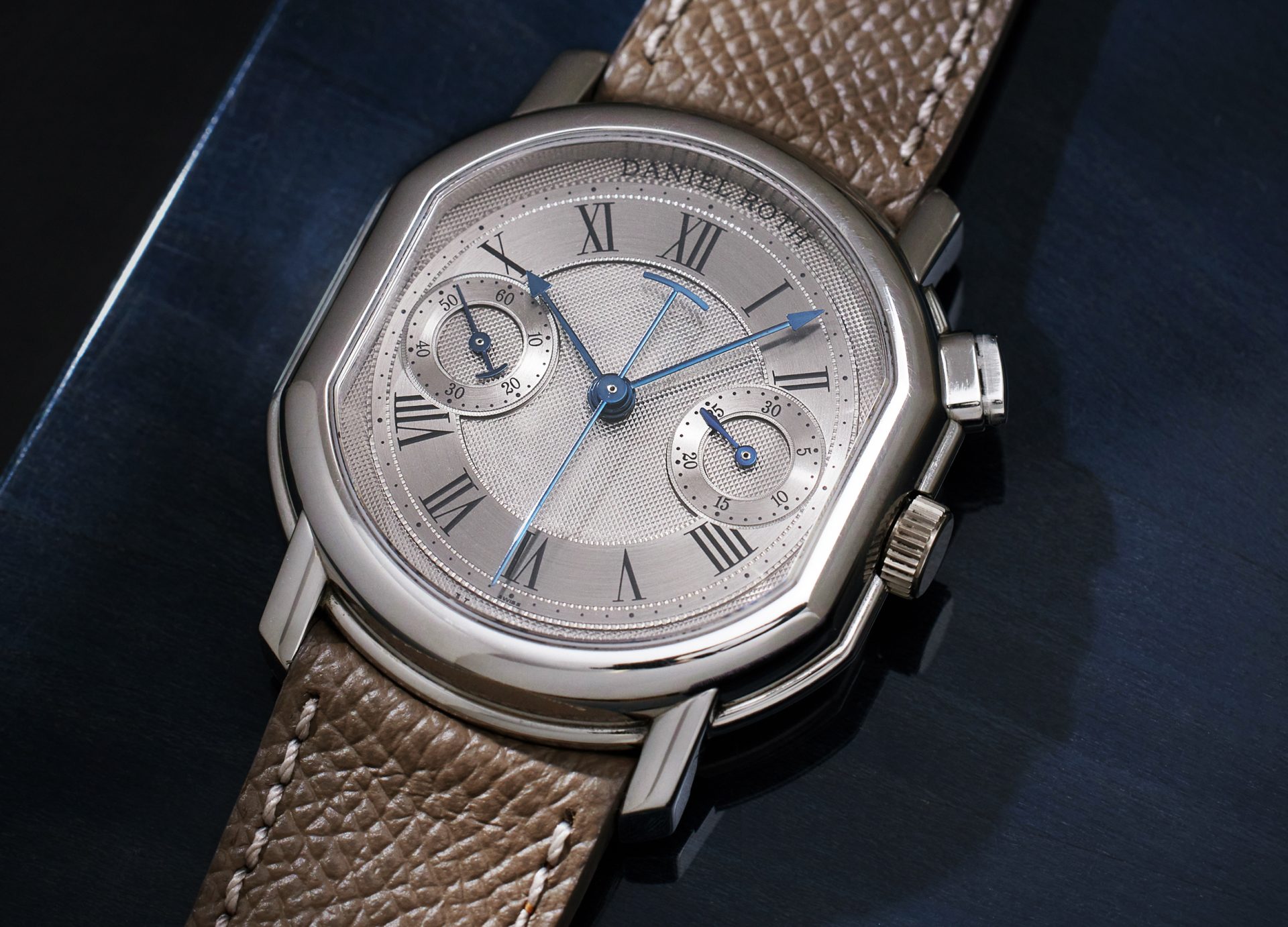
The dial is a restrained shade of grey gold, which blends smoothly into the hue of the platinum case. The varying textures, from the Clous de Paris in the centre to the brushed chapter ring, makes the dial visually intricate and refined. It is signed “DANIEL ROTH” at 12 o’clock and “NUMERO 8” at 6 o’clock, where the watch’s unique number is displayed. The movement also displays the same number, in line with Roth’s practice of numbering dials and movements. The lance-shaped hands, a visual inspiration from the Abraham-Louis Breguet, are rendered in blued steel.
The double-ellipse case of the monopusher is extremely innovative in its execution. Neither round nor rectangular, it balances the two different shapes, complemented by a stepped bezel and sharp, straight lugs. The monopusher on the right-hand side of the case repeats this double-ellipse shape, lending balance to the overall design. Interestingly, the case of this Monopusher Chronograph is larger than the other chronographs produced by Roth during this era, to accommodate for the larger Lemania 2220 ébauche.
Later on, after the watchmaker began to be less involved with the brand, 10 more of these movements were found and installed into Daniel Roth chronographs. These can be distinguished from the first batch of monopushers thanks to their swan-neck regulator, which was not included the first time round, and a less intricate dial design.
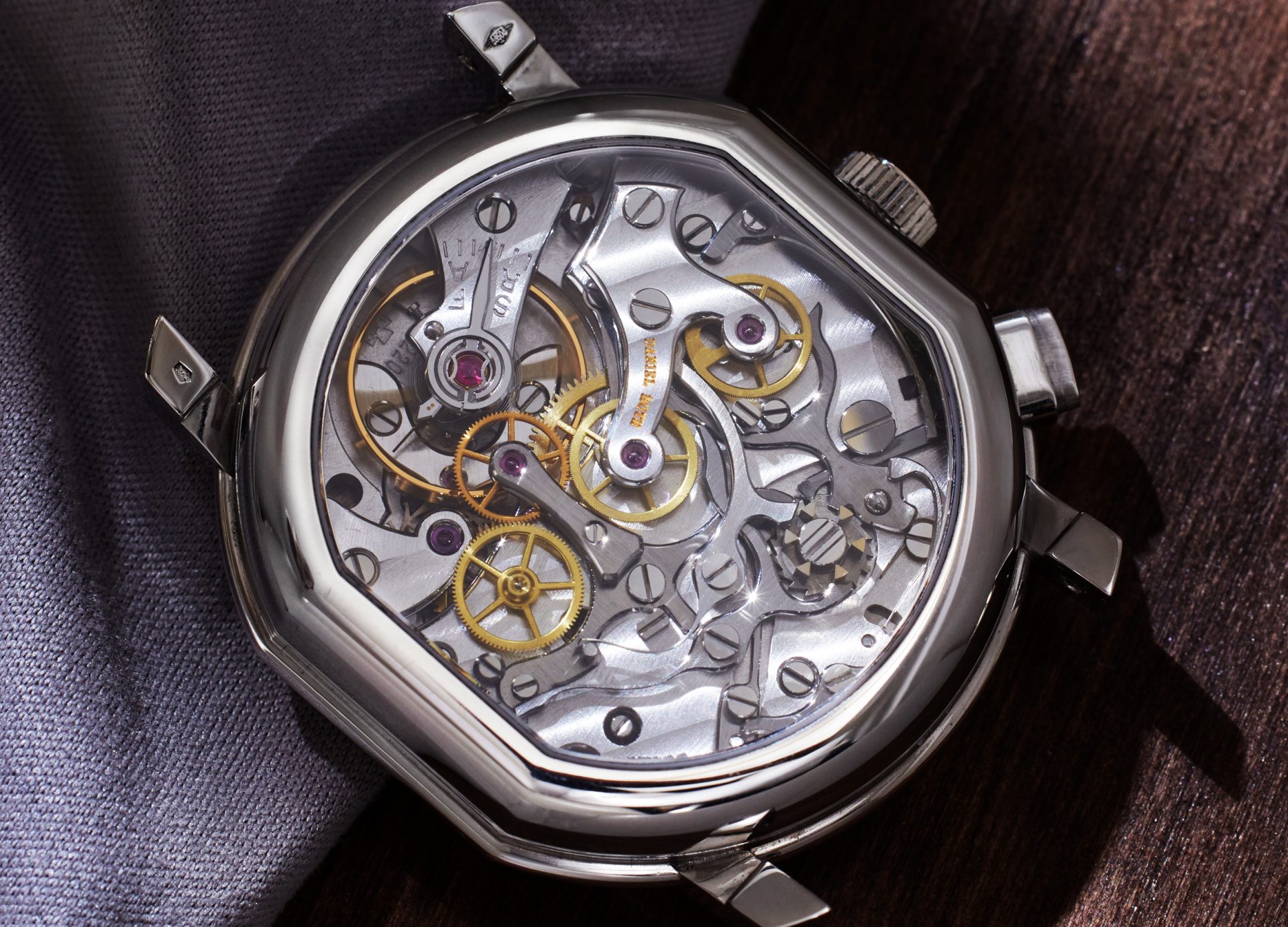
Audemars Piguet, Star Wheel in Platinum
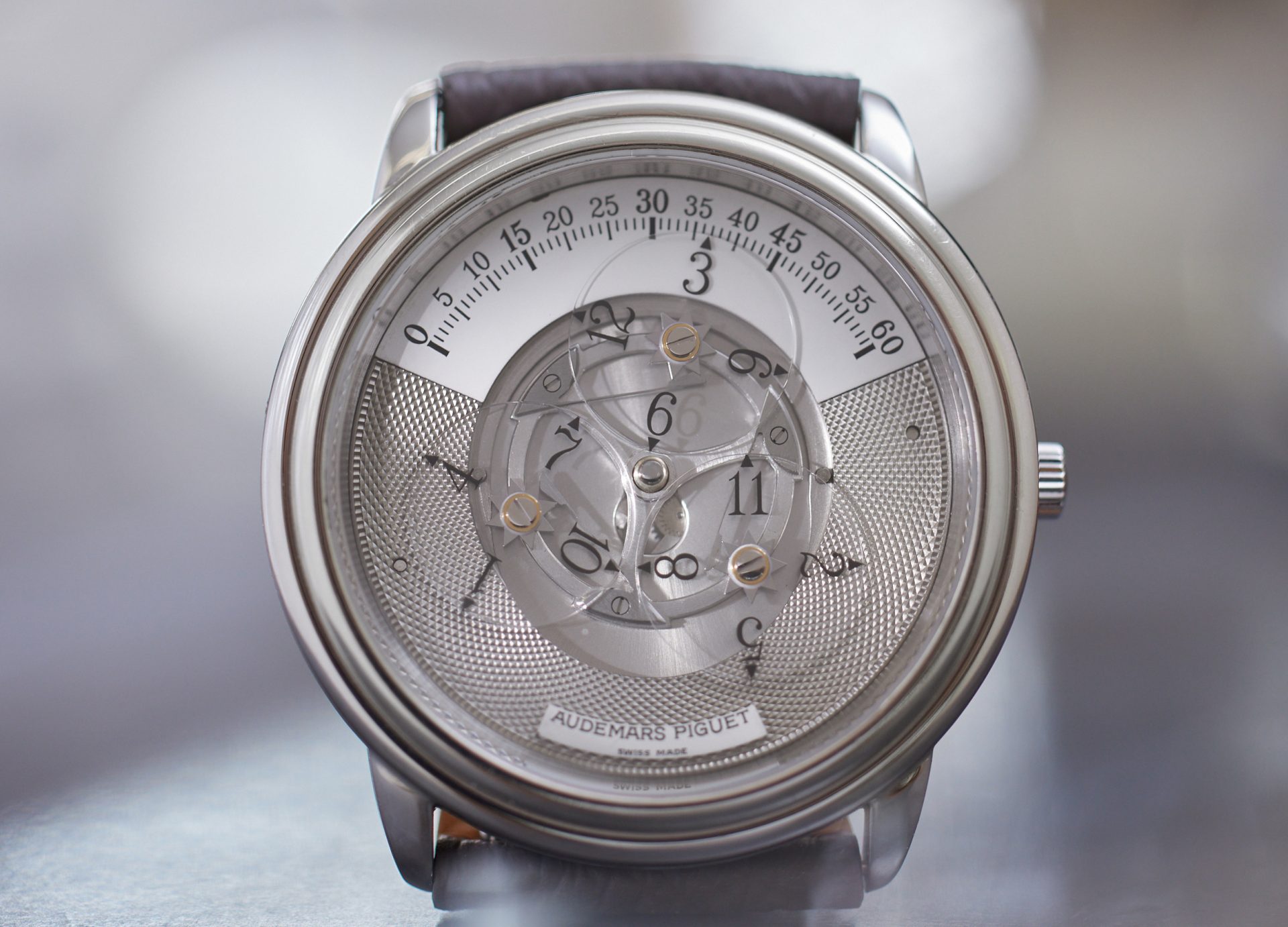
The Star Wheel displays time via three sapphire disks with printed hours, which rotate on a centre pivot, where usually the hour and minute hands are attached. The name of the watch is derived from the star-shaped wheels which connect the sapphire disks to this rotating centre ring. The hours on the disks point to the minutes on a 120-degree sector, gliding over them over the course of an hour. The rotating ring turns 360 degrees (one full turn) in 3 hours. While not quite a jump-hour watch, the Star Wheel has a satisfying mechanical feature: the sapphire disks jump into position right before sliding over the minutes track.
The dial features endless absorbing details, from the subtle guilloché found on the lower portion of the dial, to the smooth finish of the minute track. The openworked mechanics in the centre, which are beautifully hand-finished with angling and polishing, offer a rich interplay of textures. Additionally, the crisp Arabic numerals on the clear sapphire disks give the appearance that they are floating above the dial, further contributing to the whimsical nature of the piece.
Franck Muller Prototype Chronograph in Stainless Steel
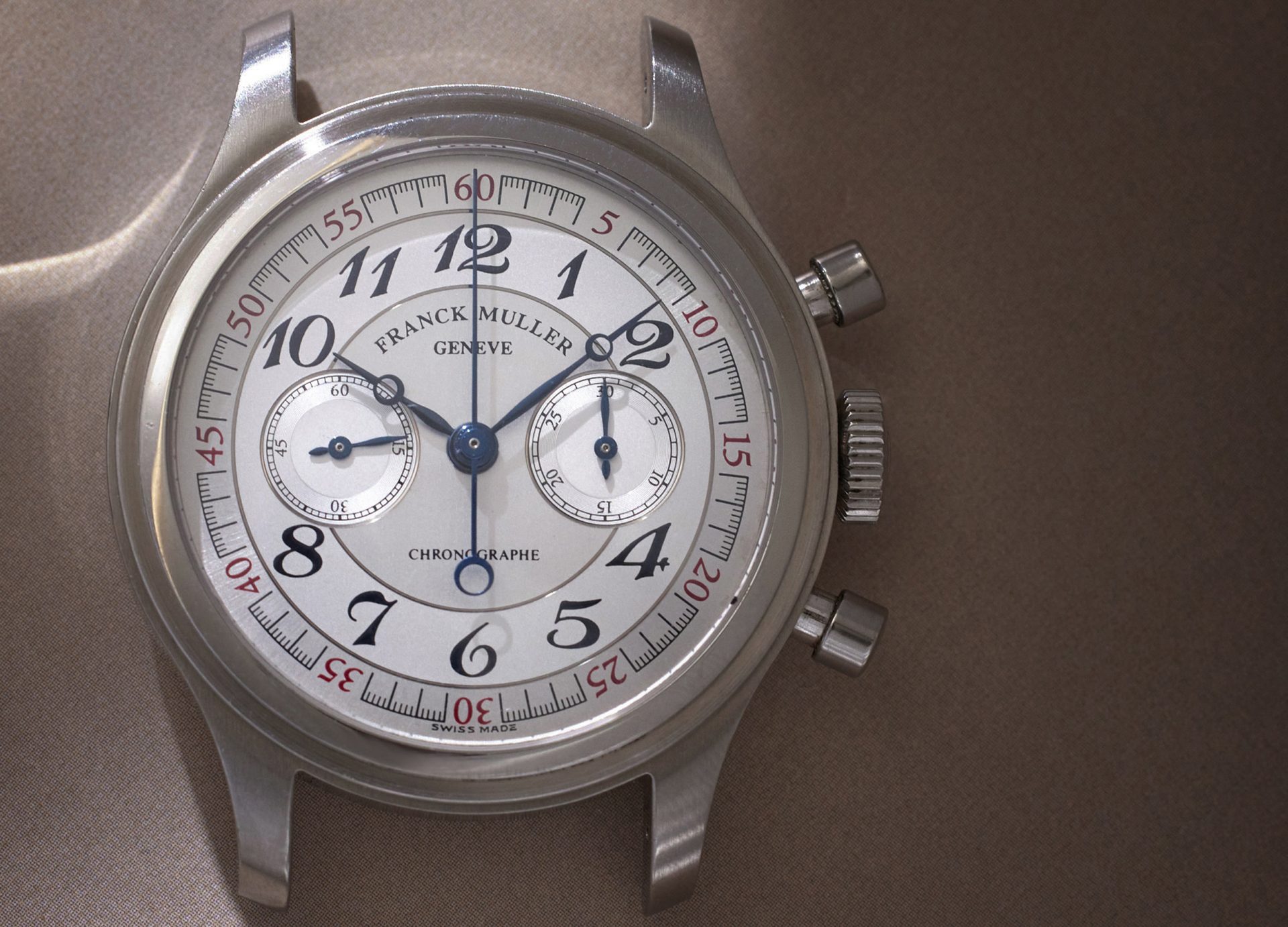
The pared-back, streamlined layout of the dial is a trait shared by many of Muller’s earlier watches, before he became more well-known for his bold and experimental designs. With this piece, Muller draws upon classic elements that can be found on vintage two-register chronographs, combining them with oversized Breguet numerals and a flash of red on the minute track around the outside.
The case is very distinct with its polished, stepped concave bezel and contrasting brushed outer portion. The three-piece construction gives the watch a bold presence on the wrist, measuring 36mm in diameter. Cased in stainless steel, it gives this chronograph a utilitarian and practical aesthetic. The “PROTOTYPE” and “N. 0/0” are engraved into the caseback, in the same style as the “FRANCK MULLER GENEVE” markings, and consistent with other Franck Muller pieces from the same period.

